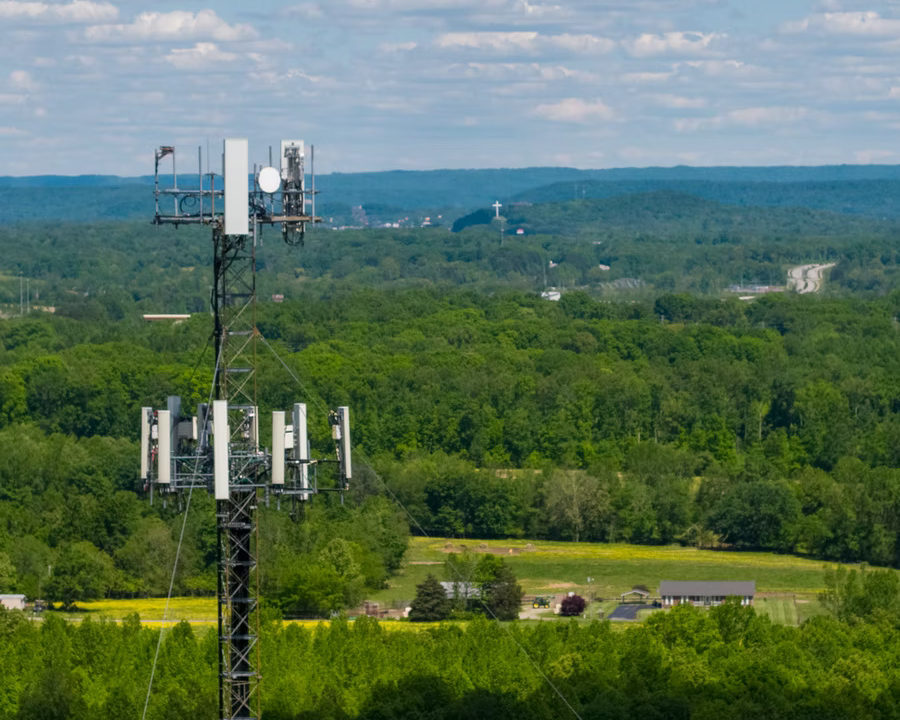
Broadband Funding Explained: What the Administration Got Right and What It Missed in NTIA’s BEAD Program
The Infrastructure Investment and Jobs Act (IIJA) provided substantial investments in our nation’s communications infrastructure primarily through the Broadband Equity, Access, and Deployment (BEAD) program. BEAD is a $42.45 billion program that will be distributed to states and territories to primarily finance broadband deployment projects. These investments are crucial to help connect all Americans and ensure that unserved populations can reap the benefits of a 21st century digital economy.
Fill me in: On May 13th, the National Telecommunications and Information Administration (NTIA) released the notice of funding opportunity (NOFO) for the BEAD program, which outlines the program’s requirements and policies. While NOFO contains several positive aspects, it also contains numerous concerning provisions which undermine the bipartisan spirit of the IIJA and will ultimately make it more difficult to connect all Americans and close the digital divide.
What the NTIA got right: NTIA’s funding notice contains several positive aspects, which will help ensure the ultimate success of the program. Some of these include:
- Focuses on unserved areas first: The NOFO directs eligible entities to certify in their Final Proposal that unserved and underserved areas will be addressed first before utilizing funding for other purposes.
- Requires Strong Subgrantee Qualifications: The NOFO addresses a key concern raised by the U.S. Chamber that subgrantees must demonstrate their qualifications to build and maintain broadband networks to ensure that taxpayer funds are spent responsibly. Some of these qualifications include robust financial, managerial, operational, and technical capabilities.
- Enables effective stakeholder engagement: Stakeholder partnerships and engagement will be crucial to understanding local needs. The NOFO includes helpful provisions such as requiring public comment periods and robust stakeholder engagement more broadly. Relatedly, it enables transparency by encouraging eligible entities to publicly post proposals prior to submissions, create dedicated websites, among other suggestions.
- Helps address the costs of broadband permitting: The NOFO helps address broadband permitting challenges by encouraging eligible entities to reduce the cost of deployment through permit streamlining and regulatory relief and allowing funds to be used to focus on permitting costs.
What the NOFO got wrong: Despite the many positive aspects, the funding notice contains numerous problematic provisions and mandates, which will hinder the IIJA’s objective to connect all Americans while running contrary to the law’s bipartisan approach.
- Promotes government-owned networks: Despite IIJA’s neutrality in respect to the type of provider, the notice undermines this neutrality to promote government-owned networks by imposing burdensome requirements on eligible entities as well as pressuring states to waive laws that place restrictions on public sector broadband providers, even if they predate IIJA enactment.
- Picks technology winners and losers: The IIJA maintains technology-neutrality for the BEAD Program. The NOFO takes the opposite approach, and strongly prioritizes fiber at the expense of other solutions and excludes some types of technology altogether, such as satellite and fixed wireless (using exclusively unlicensed spectrum).
- Incentivizes a patchwork net neutrality rules: The NOFO requires that all eligible entities must ensure that subgrantees do not “impose unjust or unreasonable network management practices” akin to net neutrality requirements. This requirement is unclear and exacerbates the challenge that broadband practices may be regulated differently across states and territories, creating a patchwork of laws.
- Ill-defined middle class affordability program: The NOFO requires eligible entities to create a middle-class affordability program, which can take the form of low-cost plans, consumer subsidies, regulations to promote structural competition, or other means. This ill-defined middle class affordability program opens the door to additional state-level intervention in the broadband marketplace, which could include solutions such as rate regulation.
- Unnecessary union preferences: The NOFO pressures eligible entities and subgrantees to align with the administration’s favored union-friendly policies. Such policies have nothing to do with connecting all Americans and everything to do with advancing unrelated union priorities on worker misclassification, preferences against non-union subcontractors, prevailing wage requirements, and project labor agreements.
What’s next?
- Implementation timeline: The IIJA and NOFO requires states and territories to submit a letter of intent to NTIA by July 18, 2022, which will be followed by the ability to request planning funds to develop an Initial Proposal and Five-Year Action Plan, which is due by August 15, 2022.
- Updated FCC maps: The bulk of BEAD Program funds will be distributed based on updated maps that will provide more precise details on who lacks access to broadband. The FCC estimates that these maps will be finalized by late Fall 2022.
The bottom line: Despite the positive aspects of the NOFO, it is disappointing that NTIA opted to pursue several partisan priorities rather than implement the IIJA consistent with the intent of Congress. The U.S. Chamber believes that NTIA needs to immediately remedy these concerns to ensure the success of the BEAD Program.
The Weekly Download
Subscribe to receive a weekly roundup of the Chamber Technology Engagement Center (C_TEC) and relevant U.S. Chamber advocacy and events.
The Weekly Download will keep you updated on emerging tech issues including privacy, telecommunications, artificial intelligence, transportation, and government digital transformation.
